Buy a 12v Power Supply Unit
Buy A 12v Power Supply Unit
Find out more about 12V mains transformers and power supply units
home > electric circuit | storage | generalAcross our many hundreds of articles we frequently present circuits, systems, and appliances which are powered by 12 Volts DC - primarily because the majority of all DIY renewable energy systems are connected to 12V battery banks. However, we receive so many questions from REUK.co.uk site visitors asking us where to purchase a suitable plug-in power supply (mains transformer / PSU) that we have put our recommendations together in this one article.
Low Power - Less than 1 Amp
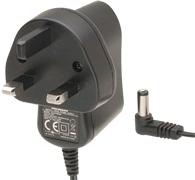
Look out for regulated power supplies (much better for sensitive electronics), and efficiency of at least 60%.
Rapid Online
5W Switch Mode Plugtop PSU (400 mA, 60% efficient)
15W Switch Mode Plugtop PSU (1.2 mA, 75% efficient)
Medium Power - 1.5A to 10A
Once you get to above 1.2 to 1.5 Amps, power supplies become a bit harder to find and are more expensive. However, they also tend to be made of better quality components, and are more efficient.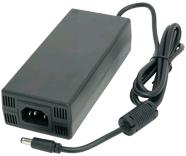
Rapid Online *
25W 12V DC Miniature Desktop Switch Mode PSU (2 Amp, 80% efficient)
65W 12V DC Miniature Desktop Switch Mode PSU (5 Amp, 80% efficient)
90W 12V DC Miniature Desktop Switch Mode PSU (7 Amp, 80% efficient)
120W 12V DC Miniature Desktop Switch Mode PSU (10 Amp, built-in cooling fan)
* The Rapid products listed above have a built-in IEC320-C8 mains power inlet. A separate figure-of-8 power lead with plug must be purchased, but these are only £2 at Rapid: click here to buy now.
High Power - more than 10 Amps
Above 10 Amps (120 Watts) it becomes very difficult to find a power supply that is not very expensive. One common solution is to use a computer power supply unit. These are available from a couple of hundred Watts up to 1kW, and can therefore reliably supply 20, 30, 40 Amps etc cost effectively and fairly efficiently.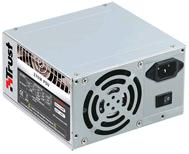
Computer PSU's are usually fitted with at least three or four output 12V connectors, so you may need to cannibalise a suitable output cable to get your 12 VDC output without opening up the case of the PSU.
One key advantage of using computer PSU's in this way, is that they are fitted with strong and quiet cooling fans as they are designed to be used in offices. Typically they offer 70% efficiency, however green power supply units are available now which give over 90% efficiency.
eBay UK
There are usually 3,000+ computer PSU's and other PSU's for sale on eBay UK at any one time. Click here to search now for PSU with prices starting from below £5.
Rapid
370W Computer PSU (30 Amp, 80mm cooling fan, just 37dB noise level, under £15 inc VAT)
Modifying a Computer PSU
Computer PSU's typically output +5V (yellow cables) and +12V (red cables), and the ground cables are black. (Sometimes there is also a low current -5V (white cable), -12V (blue cable), and power good (orange cable) which you will not be using.) The cables are fitted to connectors ready for quick plug-in connection to the computer motherboard, CPU, hard drive, etc. Simply cut off the connector plugs, group the wires of each colour together - i.e. all the reds, all the yellows, all the blacks - and solder the ends together.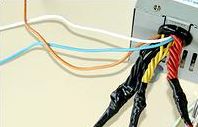
The current rating for each output from the PSU should be printed on the PSU case, so simply add up the total +12V Amps to calculate the absolute maximum current which can be taken from the PSU at 12 Volts DC. Put a fuse between the soldered end of the bundled red wires and the device to be powered for safety. Ideally the fuse should be rated at 10-20% below the maximum stated PSU +12V current rating, and you should use no more than 60-70% of the available current.
Make sure that the cable you use between the PSU and the device to be powered has a current rating in excess of that required by the device to be powered.
Comment on this Article
If you have any comments on this article, please email them to neil@reuk.co.uk.| Just been converting (messing around with) an ATX PSU for a +ve 12v supply. Not sure if you have got your colours mixed upon here. On this [power supply], the +ve 12v are the yellow wires and the +ve 5v are the red wires. See here: power supply basics inc pinouts. Also, there is a green wire that has to be connected to ground(Black) to get the PSU running. Dave, 2nd March 2011 |
Related Articles and Products
More from the REUK.co.uk website:| Make a Shunt Resistor Make your own rough and ready shunt resistor  | Water Pump Hysteresis Circuit A simple circuit to prevent a pump being damaged by being turned on and off rapidly (multiswitching)  | Reducing Relay Power Consumption Learn a very simple way to greatly reduce relay holding current  | Use Thermostat as 12 Volt Timer Find out how an old battery powered thermostat can be used as a low voltage automatic timer 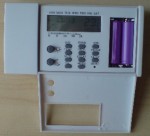 |
| Switch from Inverter to Mains Automatically Power a circuit directly from a power inverter, but with automatic mains power back up. 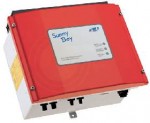 | Three Phase Basics Get an understanding of three phase wiring in wind turbine alternators  | Using The LM317T To Regulate Voltage Use an LM317T to regulate voltage in renewable energy projects 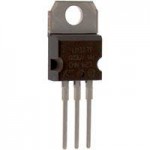 | Smoothing Capacitors Find out more about the uses of smoothing capacitors in renewable energy circuits  |
electric circuit, storage, general.